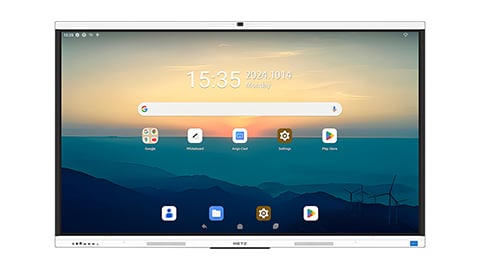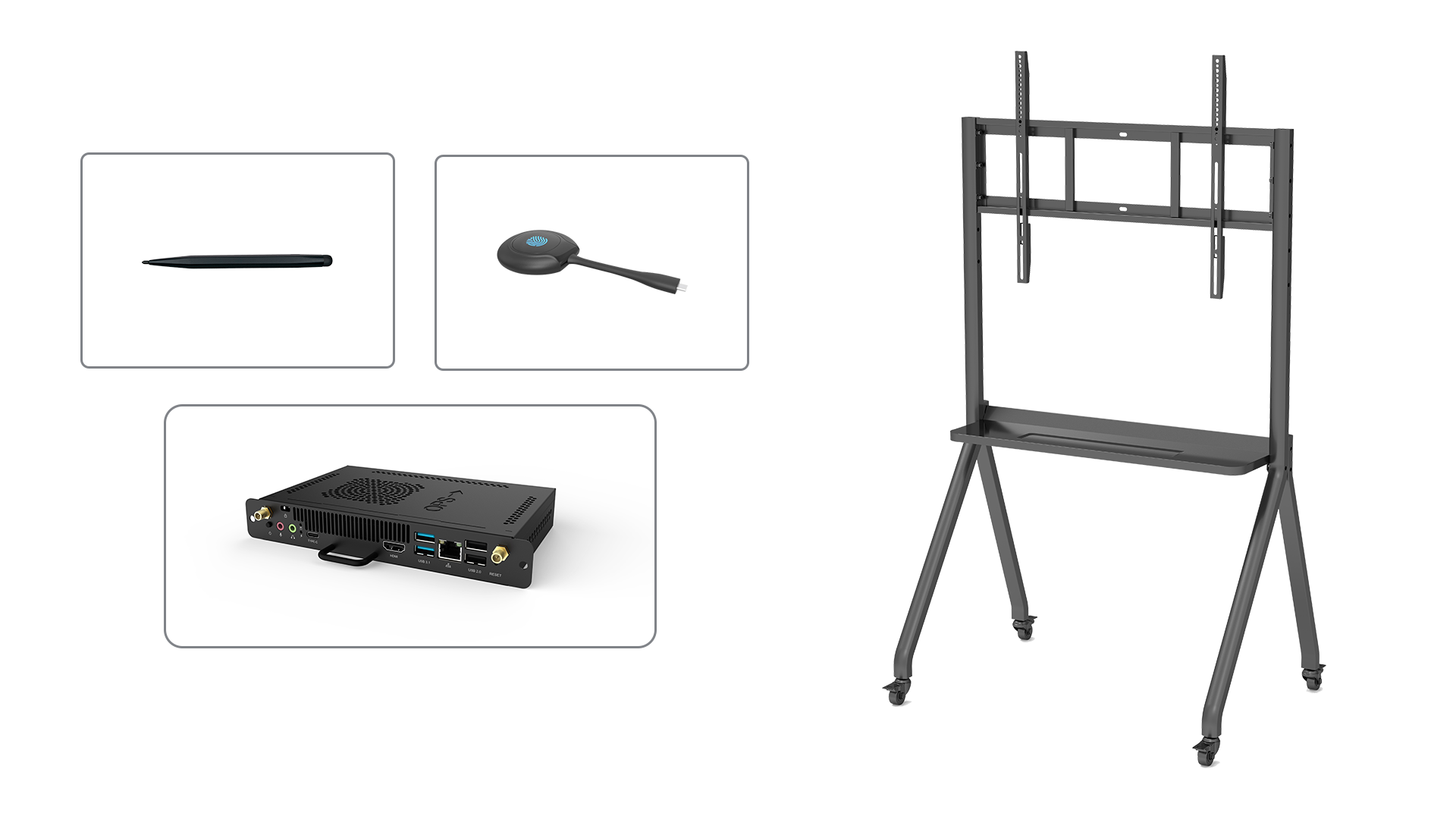Introduction: The Evolution of Whiteboards into Smartboards
In today's digital age, traditional whiteboards have been transformed into cutting-edge interactive tools known as smartboards. These innovative devices have revolutionized the way we teach and learn, providing endless possibilities for engagement and collaboration in the classroom. In this comprehensive guide, we will explore the features, benefits, and applications of smartboard whiteboards, showcasing their immense potential to enhance educational experiences.
1. Understanding Smartboard Whiteboards
Smartboard whiteboards are interactive display systems that combine the functionality of a traditional whiteboard with the power of modern technology. These devices typically consist of a large touch-sensitive screen connected to a computer or other digital devices. With the ability to display and interact with digital content, smartboard whiteboards offer a dynamic learning environment that encourages active participation and knowledge retention.
2. Features and Benefits of Smartboard Whiteboards
Smartboard whiteboards come equipped with a myriad of features designed to enhance teaching and learning experiences. These include:
- Touch-sensitive surface: Users can interact directly with the board using their fingers or a stylus, making it easy to write, draw, or manipulate objects on the screen.
- Multi-touch capability: Smartboards support multiple touch points, allowing multiple users to work collaboratively on the same screen.
- Integration with digital content: Smartboard whiteboards can display and interact with various digital resources, including presentations, videos, websites, and educational software.
- Annotation tools: Users can annotate and highlight content on the screen, making it easier to emphasize important points and engage students.
- Wireless connectivity: Many smartboards offer wireless connectivity options, enabling seamless integration with other devices, such as smartphones and tablets.
The benefits of using smartboard whiteboards in the classroom are numerous. They promote active learning, foster student engagement, facilitate collaboration, and encourage critical thinking. By incorporating multimedia elements and interactive activities, smartboards make lessons more dynamic and appealing, catering to different learning styles and enhancing information retention.
3. Applications in Education
Smartboard whiteboards have found widespread use in educational settings, from primary schools to universities. They offer countless opportunities to enhance teaching and learning across various subjects and disciplines. Some of the key applications of smartboard whiteboards in education include:
- Interactive lessons: Smartboards enable teachers to create interactive lessons that combine multimedia resources, interactive quizzes, and real-time feedback, fostering active participation among students.
- Virtual field trips: With the help of smartboards, students can embark on virtual field trips, exploring different places, cultures, and historical events without leaving the classroom.
- Collaborative projects: Smartboards facilitate group work and collaborative projects by allowing students to work together on the same screen, sharing ideas, and brainstorming collectively.
- Assessment and feedback: Teachers can use smartboards to assess student understanding in real-time, providing instant feedback and adjusting their teaching accordingly.
- Special education support: Smartboards offer various accessibility features that cater to students with special needs, such as visual impairments or motor skill difficulties.
The versatility and adaptability of smartboard whiteboards make them an invaluable tool for educators, empowering them to create immersive and personalized learning experiences.
4. Implementation Challenges and Solutions
Despite their numerous advantages, integrating smartboard whiteboards into classrooms may pose some challenges. These challenges can include technical issues, limited training opportunities, and resistance to change. However, with proper planning and support, these obstacles can be overcome. Schools can invest in robust technical infrastructure, provide comprehensive training for teachers, and foster a positive attitude towards technology adoption. By addressing these challenges proactively, schools can ensure a smooth transition to smartboard whiteboards and maximize their potential.
5. Best Practices for Using Smartboard Whiteboards
To make the most of smartboard whiteboards, educators can follow these best practices:
- Plan interactive lessons: Incorporate a variety of interactive activities, multimedia resources, and engaging content to create captivating lessons.
- Encourage student participation: Use the interactive features of smartboards to encourage students to actively participate in the learning process.
- Promote collaboration: Foster collaboration and teamwork by assigning group activities that require students to work together on the smartboard.
- Provide training and support: Ensure that teachers receive adequate training on smartboard whiteboard usage and provide ongoing support to address any concerns or questions.
- Continuously explore new tools and resources: Keep up with the latest advancements in smartboard technology and explore new educational apps and software.
By following these best practices, educators can harness the full potential of smartboard whiteboards and create an engaging and interactive learning environment.
6. Smartboard Whiteboards: A Cost-Effective Solution
Contrary to popular belief, smartboard whiteboards can be a cost-effective solution in the long run. While the initial investment may be higher compared to traditional whiteboards, the benefits they offer outweigh the costs. By reducing the need for physical teaching aids, minimizing printing and distribution expenses, and enhancing student engagement, smartboard whiteboards can lead to long-term cost savings and improved educational outcomes.
7. Future Trends in Smartboard Whiteboard Technology
The field of smartboard whiteboard technology is continuously evolving, and future trends are poised to further enhance interactive learning experiences. Some of the upcoming trends include:
- Artificial intelligence integration: Smartboards may leverage artificial intelligence to provide personalized learning experiences, adapt content to individual student needs, and offer intelligent feedback.
- Augmented reality and virtual reality integration: Smartboards could incorporate augmented reality and virtual reality technologies, enabling students to interact with virtual objects and environments.
- Enhanced connectivity: Smartboards may feature improved wireless connectivity options, allowing seamless integration with various devices and online resources.
- Gesture recognition: Future smartboards might incorporate gesture recognition technology, enabling users to interact with the board using intuitive gestures.
These trends hold great promise for the future of education, and smartboard whiteboards are at the forefront of this technological revolution.
8. The Role of Smartboard Whiteboards in Remote Learning
Smartboard whiteboards have become indispensable tools in the realm of remote learning. As the world faced the COVID-19 pandemic, educational institutions turned to online learning platforms, and smartboard whiteboards played a crucial role in replicating the interactive classroom experience. With features like real-time collaboration, video conferencing integration, and screen sharing capabilities, smartboard whiteboards facilitate effective remote teaching and learning, ensuring continuity in education during challenging times.
9. Smartboard Whiteboard Maintenance and Care
To ensure the longevity and optimal performance of smartboard whiteboards, proper maintenance and care are essential. Here are some maintenance tips:
- Regular cleaning: Clean the smartboard regularly using a soft, lint-free cloth to remove dust and fingerprints.
- Protective measures: Use screen protectors to prevent scratches and damage to the surface of the smartboard.
- Secure storage: When not in use, store the smartboard in a safe and secure location, away from direct sunlight and extreme temperatures.
- Software updates: Keep the smartboard software up to date to ensure compatibility with the latest applications and features.
By following these maintenance practices, educators can extend the lifespan of their smartboard whiteboards and ensure optimal performance.
10. Conclusion: Embrace the Power of Smartboard Whiteboards
Smartboard whiteboards have transformed traditional classrooms into interactive hubs of learning, promoting collaboration, engagement, and innovation. With their extensive features, benefits, and applications, these devices have become indispensable tools for educators and students alike. By embracing the power of smartboard whiteboards, we can unlock the full potential of interactive learning and nurture the lifelong love for knowledge in the minds of future generations.






